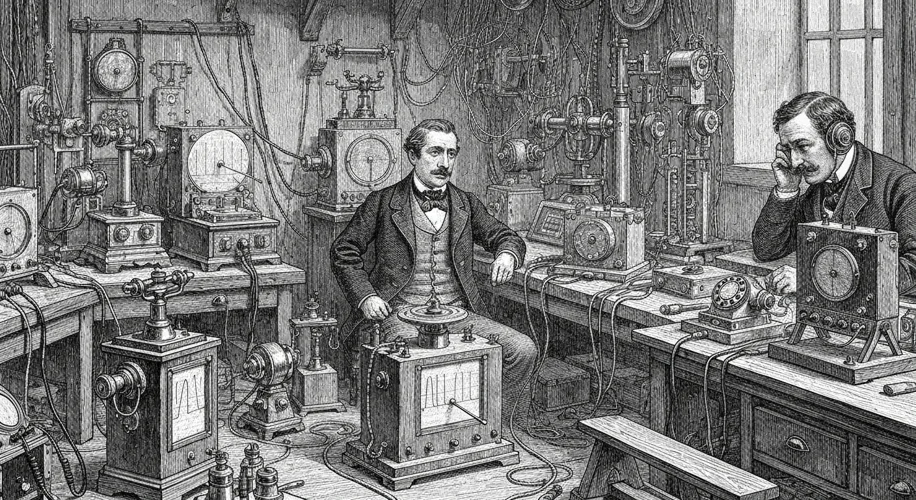In the bustling workshops and laboratories of the late 19th century, a quiet revolution was brewing, one that would fundamentally alter the fabric of human connection. While the telegraph had already begun to shrink distances by transmitting messages across wires, it was a comparatively slow and cumbersome process. The true leap forward in instantaneous communication arrived on March 10, 1876, with the first successful transmission of intelligible human speech.
The name etched in history for this groundbreaking achievement is Alexander Graham Bell. Born in Scotland and later immigrating to Canada and then the United States, Bell was driven by a lifelong passion for sound and speech, deeply influenced by his mother and wife, both of whom were deaf. This personal connection fueled his desire to find new ways for people to communicate.
Bell’s journey was not a solitary one, though his name is most prominently associated with the invention. He was a tireless experimenter, working alongside his assistant, Thomas A. Watson. Their collaboration was marked by countless trials, errors, and moments of profound insight. The famous first words transmitted were “Mr. Watson—Come here—I want to see you,” a simple plea that echoed across the ages, signifying the dawn of a new era.

The invention, patented as “an improvement in telegraphy,” was initially met with a mixture of awe and skepticism. Many struggled to grasp the potential of a device that could carry voices across vast distances. However, its impact was swift and transformative. Businesses were among the first to recognize the telephone’s value. The ability to conduct transactions, negotiate deals, and manage operations in real-time, without the delay of written messages, dramatically increased efficiency and fostered economic growth. Salespeople could connect with clients, factories could coordinate with suppliers, and the pace of commerce quickened.
Beyond the realm of business, the telephone began to weave itself into the tapestry of social life. For families separated by distance, it offered a lifeline, allowing them to share news, comfort, and laughter instantaneously. Imagine the joy of a mother hearing her child’s voice from across the country, or friends staying connected despite geographical divides. This newfound ability to converse intimately and immediately fostered stronger personal relationships and reduced the isolation that distance had previously imposed.
The societal impact was profound. The telephone:
- Shrank Distances: It made the world feel smaller, connecting people across cities, states, and eventually, continents.
- Accelerated the Pace of Life: Decisions could be made faster, information disseminated more quickly, and daily routines streamlined.
- Transformed Social Interactions: It created new forms of communication, etiquette, and even social anxiety.
- Fueled Innovation: It paved the way for future communication technologies, from radio to the internet.
The telephone wasn’t just a tool; it was a catalyst for change. It democratized communication, moving it from the realm of specialized operators to the average household. While early telephones were expensive and cumbersome, their widespread adoption in the following decades revolutionized how people lived, worked, and interacted. It fostered a sense of immediacy and interconnectedness that continues to shape our modern world, a testament to the vision and perseverance of pioneers like Alexander Graham Bell.

